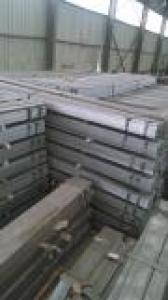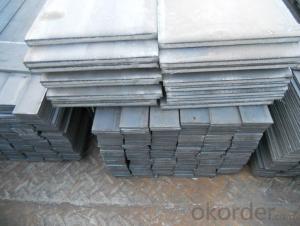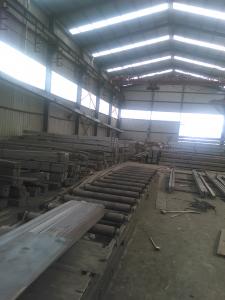Hot Rolled Steel Flat Bar with Enough Thickness 10mm Chinese Standard
- Loading Port:
- China main port
- Payment Terms:
- TT or LC
- Min Order Qty:
- 25 m.t.
- Supply Capability:
- 10000 m.t./month
OKorder Service Pledge
OKorder Financial Service
You Might Also Like
1. Structure of Hot Rolled Steel Flat Bar with Enough Thickness 10mm Chinese Standard Description:
Hot rolled steel flat bar with enough thickness 10mm Chinese standard is a beam with an I-shaped cross-section. The horizontal elements of the "I" are known as flanges, while the vertical element is termed the "web". Hot rolled steel flat bar with enough thickness 10mm Chinese standard is usually made of structural steel and is used in construction and civil engineering. The hot rolled steel flat bar with enough thickness 10mm Chinese standard resists shear forces, while the flanges resist most of the bending moment experienced by the beam. Hot rolled steel flat bar with enough thickness 10mm Chinese standard theory shows that the I-shaped section is a very efficient form for carrying both bending and shears loads in the plane of the web.
2. Main Features of Hot Rolled Steel Flat Bar with Enough Thickness 10mm Chinese Standard:
• Grade: Q235
• Type: Mild carbon steel
• Deflection: The stiffness of the I-beam will be chosen to minimize deformation
• Vibration: The stiffness and mass are chosen to prevent unacceptable vibrations, particularly in settings sensitive to vibrations, such as offices and libraries.
• Local yield: Caused by concentrated loads, such as at the beam's point of support.
3. Hot Rolled Steel Flat Bar with Enough Thickness 10mm Chinese Standard Images:

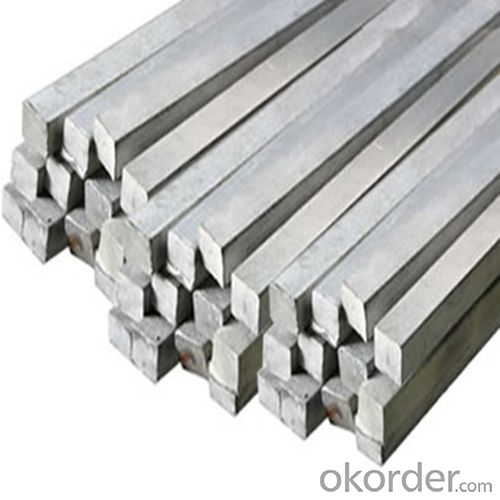
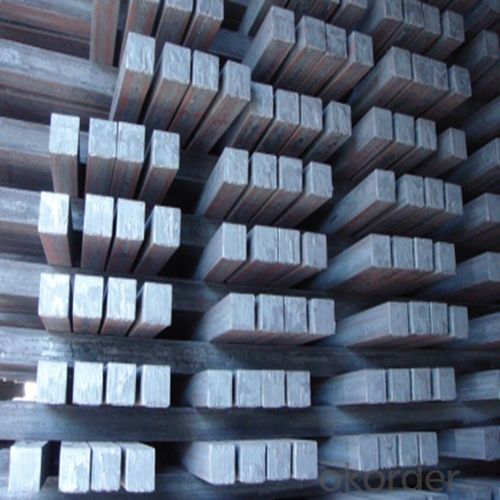
4. Hot Rolled Steel Flat Bar with Enough Thickness 10mm Chinese Standard Specification:
Alloy No | Grade | Element(%) | ||||
C
| Mn
| S
| P
| Si
| ||
Q235
|
B
|
0.12—0.20 |
0.3—0.7 |
≤0.045 |
≤0.045
|
≤0.3
|
Alloy No | Grade | Yielding strength point(Mpa) | Tensile strength (Mpa) | Elongation after fracture(%) | ||||||
Thickness (mm) | Thickness (mm) | |||||||||
≤16 | >16--40 | >40--60 | >60--100 | ≤16 | >16--40 | >40--60 | >60--100 | |||
≥ | ≥ | |||||||||
Q235 |
B |
235 |
225 |
215 |
205 |
375--500 |
26 |
25 |
24 |
23 |
5. FAQ
We have organized several common questions for our clients,may help you sincerely:
①Is this product same as W beam?
In the United States, the most commonly mentioned I-beam is the wide-flange (W) shape. These beams have flanges in which the planes are nearly parallel. Other I-beams include American Standard (designated S) shapes, in which flange surfaces are not parallel, and H-piles (designated HP), which are typically used as pile foundations. Wide-flange shapes are available in grade ASTM A992,[4] which has generally replaced the older ASTM grades A572 and A36.
②How to inspect the quality?
We have a professional inspection group which belongs to our company. We resolutely put an end to unqualified products flowing into the market. At the same time, we will provide necessary follow-up service assurance.
③Is there any advantage about this kind of product?
Steel I beam bar IPE has a reduced capacity in the transverse direction, and is also inefficient in carrying torsion, for which hollow structural sections are often preferred.
- Q:Can steel flat bars be heat-treated for increased hardness?
- Absolutely! Steel flat bars have the capability to undergo heat treatment for the purpose of enhancing their hardness. Heat treatment is an intricate procedure that entails heating the steel to a specific temperature and subsequently rapidly cooling it, resulting in a transformation of its microstructure and an improvement in its mechanical properties. The most commonly employed methods for increasing hardness through heat treatment are quenching and tempering. During the quenching process, the steel is heated to an elevated temperature and promptly cooled by immersing it in a quenching medium, such as oil or water. This swift cooling prompts the formation of a rigid and brittle phase known as martensite, which significantly heightens the steel's hardness. However, after the quenching stage, the steel often becomes excessively brittle and susceptible to cracking. To counteract this, it undergoes a tempering process. Tempering involves reheating the steel to a lower temperature and subsequently cooling it at a slower rate. This particular procedure mitigates the brittleness of the steel and enhances its toughness and ductility, while still maintaining a certain level of hardness. The precise parameters of the heat treatment, including the temperature and duration of heating, cooling rate, and tempering temperature, are contingent upon the composition of the steel and the desired level of hardness. It is of utmost importance to exercise meticulous control over these parameters to attain the desired hardness, while simultaneously avoiding any potential issues such as cracking or distortion. In summary, steel flat bars can indeed be subjected to heat treatment in order to augment their hardness. This process, encompassing quenching and tempering, effectively transforms the microstructure of the steel, improving its mechanical properties and rendering it suitable for a wide array of applications that necessitate high levels of hardness and strength.
- Q:The distinction between flat steel and steel strip
- Flat bar is strip, mostly 30*3, 40*4, 50*5 and so on. Strip: Blue (sometimes called black) is a chemical treatment, the surface to form a dense oxide film, corrosion and decoration;
- Q:How do you determine the corrosion resistance of a steel flat bar?
- There are several methods available to determine the corrosion resistance of a steel flat bar. One commonly used method involves conducting corrosion tests, such as salt spray testing or immersion testing. In salt spray testing, the flat bar is exposed to a controlled environment of saltwater mist to simulate corrosive conditions. Regular inspections are then conducted to identify any signs of corrosion or degradation. Another approach is immersion testing, where the flat bar is submerged in a corrosive solution for a specific period. The choice of solution depends on the intended application, with examples including acidic solutions like sulfuric acid or alkaline solutions like sodium hydroxide. The flat bar is examined for any indications of corrosion or changes in appearance. Electrochemical testing techniques, such as potentiodynamic polarization or electrochemical impedance spectroscopy, can also be employed. These methods involve applying a controlled electrical current to the flat bar and measuring the resulting electrochemical response. By analyzing the data obtained, corrosion resistance parameters such as corrosion potential and corrosion current can be determined. Furthermore, it is crucial to consider the composition and surface treatment of the steel flat bar. Different alloys and surface coatings can significantly impact corrosion resistance. Factors like the presence of corrosion-resistant elements such as chromium, as well as the application of protective coatings like galvanization or painting, can enhance overall corrosion resistance. In conclusion, an accurate assessment of the corrosion resistance of a steel flat bar requires a combination of laboratory testing, electrochemical techniques, and consideration of the steel's composition and surface treatment.
- Q:Can steel flat bars be hardened or heat treated?
- Yes, steel flat bars can be hardened or heat treated, depending on the specific type of steel used. Heat treatment involves heating the steel to a specific temperature and then cooling it rapidly to achieve the desired level of hardness. This process can be used to increase the strength and durability of the steel flat bars. Hardening and heat treatment are commonly employed in various industries, such as construction, manufacturing, and automotive, to enhance the properties of steel flat bars and make them suitable for specific applications.
- Q:What are the weight calculations for steel flat bars?
- The weight calculations for steel flat bars depend on the dimensions and density of the specific steel being used. To calculate the weight of a steel flat bar, you would typically multiply the cross-sectional area of the bar by its length and density. The cross-sectional area of a flat bar can be calculated by multiplying its width by its thickness. For example, if a flat bar has a width of 2 inches and a thickness of 0.25 inches, the cross-sectional area would be 0.5 square inches. To determine the weight, you would then multiply the cross-sectional area by the length of the bar and the density of the steel. The density of steel can vary depending on the specific alloy, but a common value is around 7.85 grams per cubic centimeter (or 7850 kilograms per cubic meter). So, if we take the example above and assume a length of 10 feet (or 120 inches), the weight of the steel flat bar can be calculated as follows: Weight = Cross-sectional area x Length x Density Weight = 0.5 square inches x 120 inches x 7850 kilograms per cubic meter Note that the units need to be consistent, so if you're using inches for the dimensions, you may need to convert the density to pounds per cubic inch or ounces per cubic inch. It's important to note that these weight calculations are based on the assumption of a solid steel flat bar. If the bar has any hollow or cut-out sections, the weight calculation would need to be adjusted accordingly. Additionally, different steel alloys may have different densities, so it's always best to consult the specific density for the type of steel you are working with.
- Q:How do I clean and maintain steel flat bars?
- Achieving and maintaining cleanliness for steel flat bars can be accomplished by following these guidelines: 1. Begin by eliminating loose dirt, dust, or debris from the bar's surface. Utilize a soft brush or cloth to avoid scratching the steel during the cleaning process. 2. Prepare a bucket of warm water and include a mild detergent or dish soap. It is essential to steer clear of abrasive cleaners or harsh chemicals that may harm the steel's surface. 3. Immerse a sponge or soft cloth into the soapy water and gently scrub the steel flat bars in a circular motion. Concentrate on areas with stains or grime, applying additional pressure if necessary. 4. Thoroughly rinse the bars with clean water to eliminate any soap residue. Ensure that all soap is removed to prevent streaks or spots on the steel. 5. Dry the steel flat bars entirely with a clean, lint-free cloth. This step is crucial as it prevents the development of water spots or rust on the surface. Verify that all sections are completely dry before proceeding. 6. In the event of rust spots on the steel, utilize a rust remover or a specifically designed steel cleaner. Follow the manufacturer's instructions to effectively eliminate the rust. 7. For regular maintenance, utilize a clean cloth to apply a thin layer of stainless steel polish or protective oil to the bars. This will aid in preventing future rusting and maintaining a shiny appearance. 8. Lastly, it is important to regularly inspect the steel flat bars for any indications of damage or corrosion. Promptly address any issues to prevent further deterioration and uphold the quality of the bars. By adhering to these steps and incorporating routine maintenance, the cleanliness, shine, and excellent condition of your steel flat bars can be preserved for an extended period.
- Q:What is the yield strength of a steel flat bar?
- The yield strength of a steel flat bar refers to the amount of stress or force that the steel can withstand before it starts to deform permanently. It is an important mechanical property that indicates the maximum load the steel can bear without experiencing plastic deformation. The yield strength of a steel flat bar can vary depending on the grade and type of steel used. Generally, common grades of steel used in flat bars have yield strengths ranging from 36,000 to 80,000 pounds per square inch (psi) or 250 to 550 megapascals (MPa). However, it is important to note that these values can vary and may also depend on factors such as the manufacturing process and any additional treatments or alloys used in the steel. Therefore, it is crucial to consult the specific specifications or testing data provided by the manufacturer or supplier to accurately determine the yield strength of a particular steel flat bar.
- Q:What is the difference between hot-rolled and extruded steel flat bars?
- Hot-rolled and extruded steel flat bars find common usage across various industries, yet they vary in terms of their manufacturing methods and resultant properties. Hot-rolled flat bars are manufactured by subjecting a steel billet or slab to temperatures surpassing its recrystallization point. Subsequently, it is rolled through a series of rollers to attain the desired shape and dimensions. This process yields a scaled surface due to the exposure to high temperatures. Renowned for their strength and toughness, hot-rolled steel flat bars are ideal for load-bearing applications like construction and infrastructure projects. Additionally, they possess a coarser surface texture when compared to extruded steel flat bars. In contrast, extruded steel flat bars are formed by coercing a heated steel billet through a die, shaping it accordingly. The extrusion process ensures a smooth and uniform surface finish, as the steel is not subjected to the same elevated temperatures as in hot rolling. These extruded steel flat bars are acclaimed for their precise dimensions and uniform cross-sectional shape, making them well-suited for applications necessitating tight tolerances, such as manufacturing machinery and architectural components. Moreover, they exhibit a finer surface finish compared to their hot-rolled counterparts. To summarize, the primary distinction between hot-rolled and extruded steel flat bars emerges from their manufacturing procedures and resultant properties. Hot-rolled bars possess robustness and toughness, accompanied by a rougher surface texture. Conversely, extruded bars offer precise dimensions alongside a smoother surface finish, rendering them suitable for applications that require stringent tolerances.
- Q:Can steel flat bars be used for making window frames?
- Yes, steel flat bars can be used for making window frames. Steel flat bars are a versatile material commonly used in construction due to their strength and durability. When used for making window frames, steel flat bars provide excellent support and stability. They can be easily customized to fit different window sizes and designs. Additionally, steel flat bars are resistant to corrosion, making them suitable for outdoor applications. Overall, using steel flat bars for making window frames is a practical choice that ensures long-lasting and reliable windows.
- Q:Can steel flat bars be used for making shelving units?
- Yes, steel flat bars can definitely be used for making shelving units. Steel flat bars are strong and durable, making them an excellent choice for shelving units that need to support heavy items. They can be easily cut and welded to create the desired size and shape of the shelving unit. Steel flat bars also have a sleek and modern look, making them suitable for various styles of interiors. Additionally, steel is resistant to corrosion, which ensures that the shelving units will last for a long time without rusting or deteriorating. Overall, steel flat bars are a reliable and versatile material for constructing sturdy and functional shelving units.
1. Manufacturer Overview |
|
|---|---|
| Location | |
| Year Established | |
| Annual Output Value | |
| Main Markets | |
| Company Certifications | |
2. Manufacturer Certificates |
|
|---|---|
| a) Certification Name | |
| Range | |
| Reference | |
| Validity Period | |
3. Manufacturer Capability |
|
|---|---|
| a)Trade Capacity | |
| Nearest Port | |
| Export Percentage | |
| No.of Employees in Trade Department | |
| Language Spoken: | |
| b)Factory Information | |
| Factory Size: | |
| No. of Production Lines | |
| Contract Manufacturing | |
| Product Price Range | |
Send your message to us
Hot Rolled Steel Flat Bar with Enough Thickness 10mm Chinese Standard
- Loading Port:
- China main port
- Payment Terms:
- TT or LC
- Min Order Qty:
- 25 m.t.
- Supply Capability:
- 10000 m.t./month
OKorder Service Pledge
OKorder Financial Service
Similar products
New products
Hot products
Related keywords




















